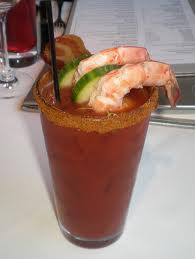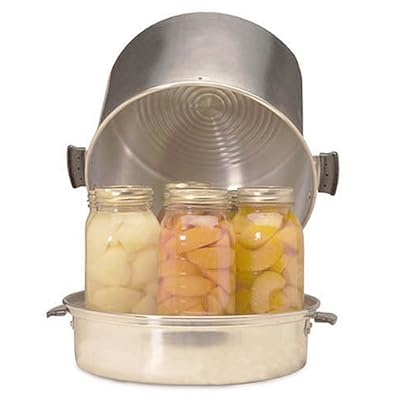I seen kumquats at my local produce stand! This tiny member of the citrus family is a treat anytime, but you will only find them in the early spring.
Kumquat ChutneyThis goes well with chicken, pork, lamb, and curry.- 6 navel oranges
- 12 fresh kumquats or 1 (10 ounce) jar preserved kumquats
- 1 red bell pepper, seeded and chopped
- 1 green bell pepper, seeded and chopped
- 1 onion, chopped
- 1 cup raisins
- 2 cups cider vinegar
- 2 cups packed brown sugar
- 2 cinnamon sticks
- 6 whole cloves
- 2 tablespoons finely chopped fresh ginger
- 1/2 teaspoon cayenne pepper, or to taste
- Salt and freshly−ground pepper, to taste
Cut the unpeeled oranges into 1/4−inch slices, and cut the slices into 6 or 8 pieces. Cut the kumquats into 1/4−inch slices. Combine all the ingredients in a large saucepan and bring to a boil over moderate heat, stirring frequently. Reduce the heat and simmer uncovered for 1 hour, stirring occasionally. Scoop out the cinnamon sticks and whole cloves, after cooking.
Ladle into sterilized jars and seal.Process in a Boiling Water Bath for 5 minutes. Will keep unprocessed refrigerated for up to 4 weeks. Makes about 5 cups or 5 1/2 pint jars.
Preserved Kumquats - Middle Eastern Style (found on Redacted Recipes)The Middle Eastern and North African tradition of preserving lemons in salt results in an explosively strong and distinctive condiment for seasoning food. They are integral to many, many dishes-- fragrant tagines, marinades and all sorts of salads. The rinsed rind can be chopped finely and mixed with olives for an instant treat and a little preserved lemon pulp and rind adds a huge amount of flavor to any fish dish.- 2 one-pint containers of kumquats--scrubbed
- Sea salt
- Fresh lemon juice, as needed (about 6 lemons)
Pat the kumquats dry and cut off the stem ends. Make a single vertical cut 3/4 of the way through each kumquat. Fill each cut with as much salt as it will hold and place them into a sterilized wide-mouth quart glass jar. Compress them into the jar until no space is left and add lemon juice to cover. Seal and set aside. Do not refrigerate.
The kumquats will be ready to use when the rinds are tender, in about 2 to 3 weeks.
Refrigerate after opening.
Pickled AsparagusSkinny, new asparagus are beginning to show up in markets--stock up on this treat!- 7 lbs asparagus
- 7 large garlic cloves
- 3 cups water
- 3 cups white distilled vinegar (5%)
- 7 small hot peppers (optional)
- 1/3 cup canning salt
- 2 tsp dill seed
7 "Quilted" 12 ounce jars(these taller jars make for prettier finished product.)
Wash asparagus well, but gently, under running water. Cut stems from the bottom
to leave spears with tips that fit into the canning jar, leaving a little more than 1/2-inch headspace. Peel and wash garlic cloves. Place a garlic clove at the bottom of each jar, and tightly pack asparagus into hot jars with the blunt ends down. In an 8-quart saucepot, combine water, vinegar, hot peppers (optional), salt and dill seed. Bring to a boil. Place one hot pepper (if used) in each jar over asparagus spears. Pour boiling hot pickling brine over spears, leaving 1/2-inch headspace. Remove air bubbles and adjust headspace if needed.
Wipe rims of jars with a dampened clean paper towel. Adjust lids and process in a Boiling Water Bath for 10 minutes.
Since the asparagus is cut to fit the jars in Fancy Style, there is a little waste in this recipe. Snap those cut pieces and use the tender parts to try this less-well-known recipe.The "Other" Pickled Asparagus- Remaining Asparagus from recipe above
- or 1 pound asparagus, snap off the bottom part and cut into 2 inch pieces
- 1 small organic lemon(or 4 Kumquats), cut into very thin slices
- 1/4 teaspoon caraway seeds
- 1/4 teaspoon dried thyme
- 1 teaspoon pickling salt
- 1 tablespoon white or brown sugar
- 5% acidity vinegar(about 1/2 cup)
- clean tap water(about 1/2 cup)
In a small bowl, toss asparagus pieces, lemon slices, slat, sugar and spices together and then stuff the mixture into a pint (16 ounce) jar. Fill jar half-way with 5% vinegar. Then top off with clean water, leaving at least 1/2 inch headspace. Apply cap and process in a Boiling Water Bath for 10 minutes.
Want to learn more about Homemade Pickles?
Come to Pickle Class!
 Bloody Marys
Bloody Marys
